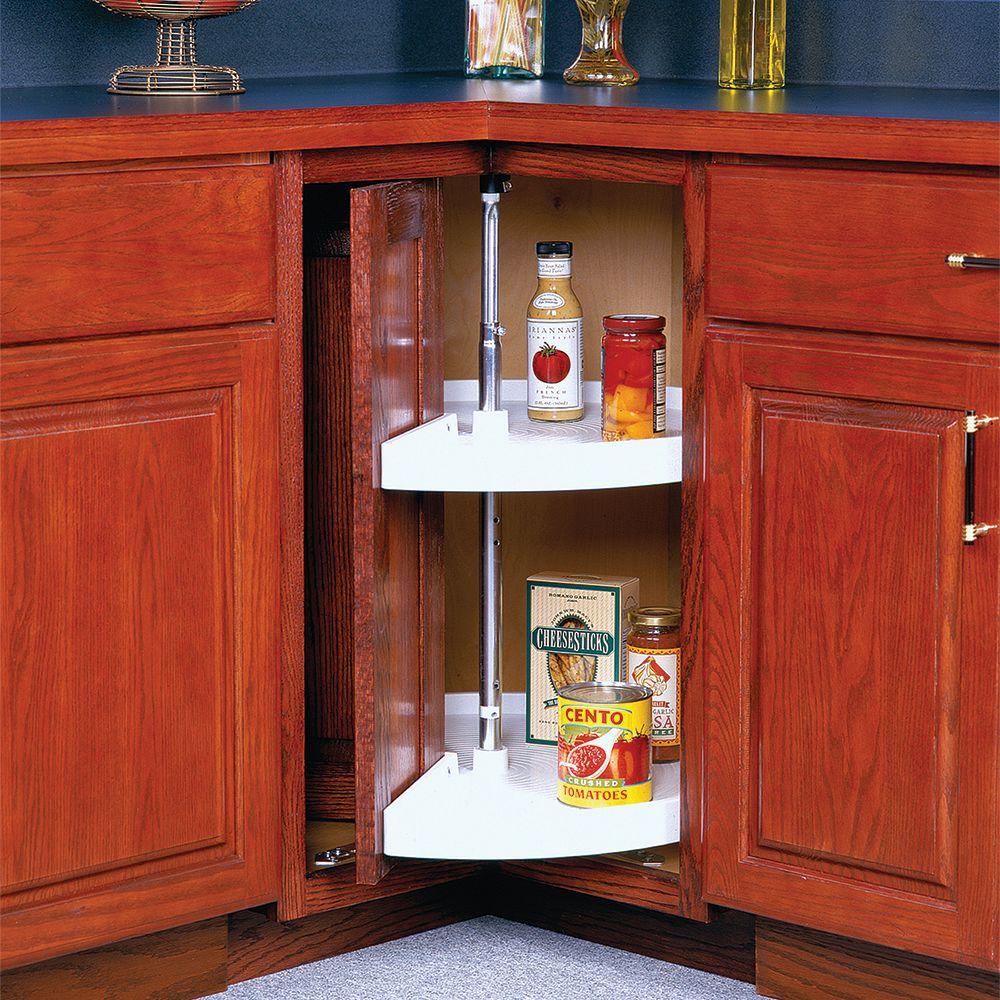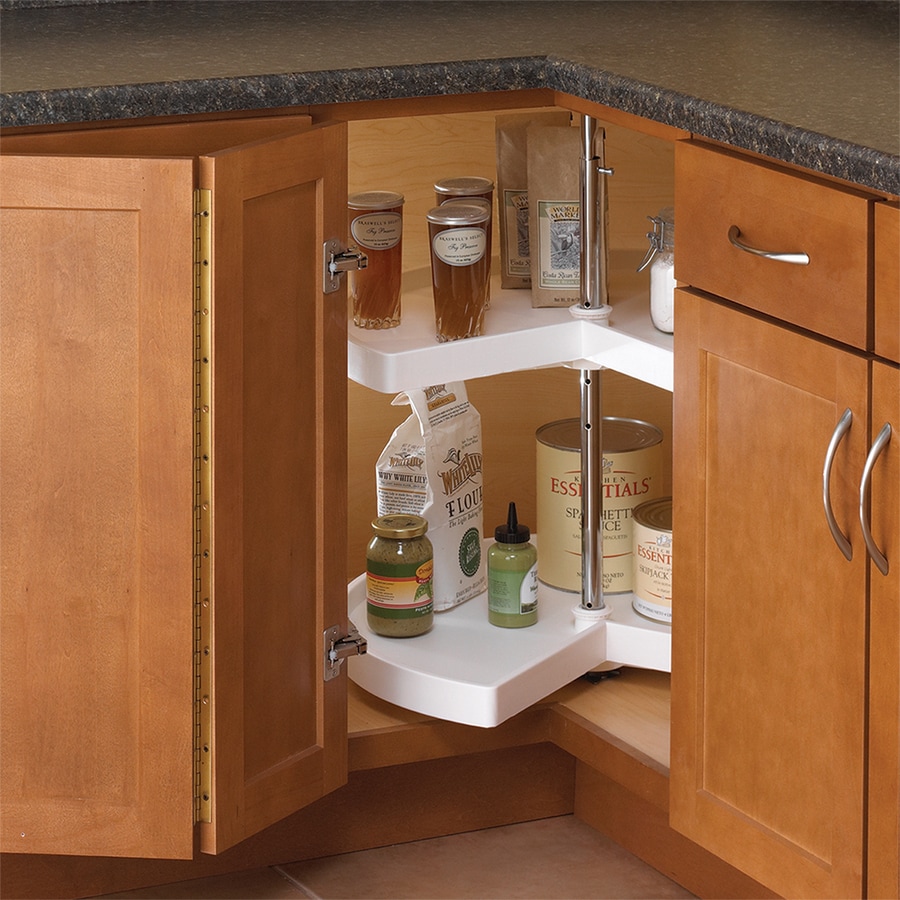Benefits of a Lazy Susan Attached to a Cabinet Door

A lazy Susan attached to a cabinet door offers a clever and efficient storage solution, especially in kitchens where space is often limited. This ingenious design allows you to maximize the use of vertical space, making it easier to access items stored in the back of deep cabinets.
Accessibility and Convenience
The primary advantage of a lazy Susan mounted on a cabinet door is its ability to bring items within easy reach. By simply opening the cabinet door, you can rotate the lazy Susan to access the desired item without having to reach deep into the cabinet or remove other items. This eliminates the need to bend or strain, making it an ideal solution for people of all ages and physical abilities.
Space Optimization in Small Kitchens
In small kitchens, where every inch of space is precious, a lazy Susan attached to a cabinet door can be a game-changer. It allows you to store a significant amount of items in a relatively small area. For example, you can use it to store spices, condiments, or even small appliances in a corner cabinet, maximizing the use of this often-underutilized space.
Enhanced Organization and Efficiency
By organizing items on a lazy Susan, you can easily locate what you need, reducing clutter and wasted time. This is particularly beneficial in pantries, where you may have a variety of items stored in a limited space. A lazy Susan can help you categorize and organize your pantry items, making it easier to find what you need quickly.
Comparison with Other Storage Solutions
Compared to traditional shelves or drawers, a lazy Susan attached to a cabinet door offers several advantages. While shelves can be difficult to access, especially if they are deep, and drawers can be bulky and take up valuable space, a lazy Susan provides a compact and accessible storage solution. It also allows you to store a wider variety of items, from small jars to larger containers, in a single space.
Installation and Customization: Lazy Susan Attached To Cabinet Door

Installing a lazy Susan on a cabinet door is a simple process that can be completed with basic tools and materials. Customization options allow you to personalize the lazy Susan to fit your specific needs and storage requirements.
Installing a Lazy Susan on a Cabinet Door
Installing a lazy Susan on a cabinet door requires a few basic tools and materials.
- Lazy Susan
- Screwdriver
- Measuring tape
- Level
- Pencil
- Drill (optional)
First, measure the inside dimensions of your cabinet door to determine the size of the lazy Susan you need. Choose a lazy Susan that is slightly smaller than the cabinet door opening to ensure a snug fit.
Next, use a pencil to mark the center of the cabinet door. Align the lazy Susan with the marked center and use a screwdriver to attach the lazy Susan to the cabinet door using the provided screws. Ensure the lazy Susan is level before tightening the screws.
For larger lazy Susans or those made of heavier materials, it is recommended to use a drill to pre-drill holes before attaching the screws. This helps to prevent the wood from splitting.
Types of Lazy Susans
Lazy Susans come in a variety of sizes, materials, and weight capacities. Choosing the right type depends on the size of your cabinet door and the items you plan to store.
Size
Lazy Susans are available in a range of diameters, from small 6-inch models to large 18-inch models. Smaller lazy Susans are ideal for storing spices, small jars, or other lightweight items. Larger lazy Susans can accommodate heavier items, such as canned goods or cookware.
Material
Lazy Susans are typically made from metal, plastic, or wood. Metal lazy Susans are durable and rust-resistant, while plastic lazy Susans are lightweight and affordable. Wooden lazy Susans offer a more elegant look but may be more susceptible to scratches and water damage.
Weight Capacity
The weight capacity of a lazy Susan depends on its size and material. Metal lazy Susans generally have a higher weight capacity than plastic or wooden lazy Susans.
| Type | Size (inches) | Material | Weight Capacity (lbs) |
|---|---|---|---|
| Small | 6-12 | Plastic, metal | 10-20 |
| Medium | 12-16 | Metal, wood | 20-40 |
| Large | 16-18 | Metal | 40-60 |
Customization Options
Lazy Susans can be customized to meet your specific storage needs. Adding dividers or compartments can help to organize items and prevent them from shifting around.
Dividers
Dividers can be used to create separate sections within the lazy Susan. This is especially helpful for storing small items, such as spices, or for separating different types of food.
Compartments
Compartments are similar to dividers but are typically larger and can be used to store larger items, such as canned goods or cookware.
“Customization options for lazy Susans can be found at many home improvement stores or online retailers.”
Uses and Organization

Lazy Susans attached to cabinet doors offer a dynamic solution for maximizing storage space and enhancing accessibility within your kitchen or bathroom. This ingenious design provides a 360-degree rotation, allowing you to easily access even the most tucked-away items.
Categorizing Items
The versatility of a lazy Susan makes it suitable for storing a wide array of items, effectively organizing your space. Here’s a categorized list of common items that can be efficiently stored in a lazy Susan attached to a cabinet door:
- Spices: This is a classic use for a lazy Susan, as it allows you to easily access all your spices without having to dig through a cluttered cabinet.
- Snacks: Keep your favorite snacks organized and readily available with a lazy Susan. Store granola bars, crackers, nuts, and other treats in airtight containers.
- Utensils: Organize your cooking utensils, such as spatulas, spoons, and whisks, in a lazy Susan for easy access while cooking.
- Baking Supplies: Store your baking essentials, including measuring cups, spoons, and cookie cutters, in a lazy Susan for convenient access when baking.
- Cleaning Supplies: Keep your cleaning supplies organized and within reach by storing them in a lazy Susan attached to a cabinet door.
- Bathroom Essentials: In the bathroom, a lazy Susan can be used to store toiletries, cotton balls, and other essential items.
Organizing Items on the Lazy Susan
Effectively organizing the items on your lazy Susan is key to maximizing its functionality. Here are some creative and efficient ways to do so:
- Labels: Using labels can help you quickly identify the contents of each container, making it easier to find what you need. You can use pre-printed labels or create your own using a label maker or simply write on sticky notes.
- Containers: Using containers can help you keep your items organized and dust-free. Clear containers allow you to see what’s inside, while opaque containers can help you hide clutter.
- Dividers: Dividers can help you separate different types of items within the lazy Susan, keeping them from getting mixed up.
Maximizing Space and Accessibility, Lazy susan attached to cabinet door
Strategically arranging items on your lazy Susan can help you maximize space and optimize accessibility. Here are some tips:
- Tall Items in the Back: Place taller items, such as bottles or jars, in the back of the lazy Susan, so they don’t block your view of the smaller items in the front.
- Frequently Used Items in the Front: Keep your most frequently used items in the front of the lazy Susan for easy access.
- Similar Items Together: Group similar items together, such as all your spices, all your snacks, or all your cleaning supplies. This will make it easier to find what you need.
Visual Illustration
Imagine a lazy Susan with a clear, acrylic base. It’s filled with various categories of items, all neatly organized and easily accessible. The front of the lazy Susan features a set of labeled containers holding frequently used spices, such as salt, pepper, and oregano. To the left of the spices are a few airtight containers storing snacks like granola bars and nuts. In the back, a set of taller jars containing baking supplies like flour, sugar, and baking soda are neatly arranged.
Lazy susan attached to cabinet door – The idea of a lazy Susan attached to a cabinet door is, frankly, a prime example of the kind of “innovation” that’s become synonymous with our current era of “efficiency.” While it might seem like a clever solution for a small space, it’s just another way to avoid addressing the root of the problem: poorly designed kitchens.
Instead of cabinet door paper towel holders , perhaps we should be focusing on creating kitchens that actually work for the people who use them, rather than resorting to these flimsy, temporary fixes. After all, if you really need a lazy Susan attached to your cabinet door, maybe it’s time to rethink your entire kitchen layout.
The idea of a lazy Susan attached to a cabinet door is, frankly, absurd. It’s a solution in search of a problem, a desperate attempt to inject some semblance of organization into a chaotic kitchen. If you’re truly concerned with aesthetics, perhaps consider investing in decorative wood accents for kitchen cabinets instead.
At least those will make your kitchen look less like a desperate attempt to contain the chaos of modern life, and more like a space designed for actual functionality. After all, a lazy Susan on a cabinet door is just a glorified, overpriced doorstop, a monument to the absurdity of trying to force order onto a system that inherently resists it.
